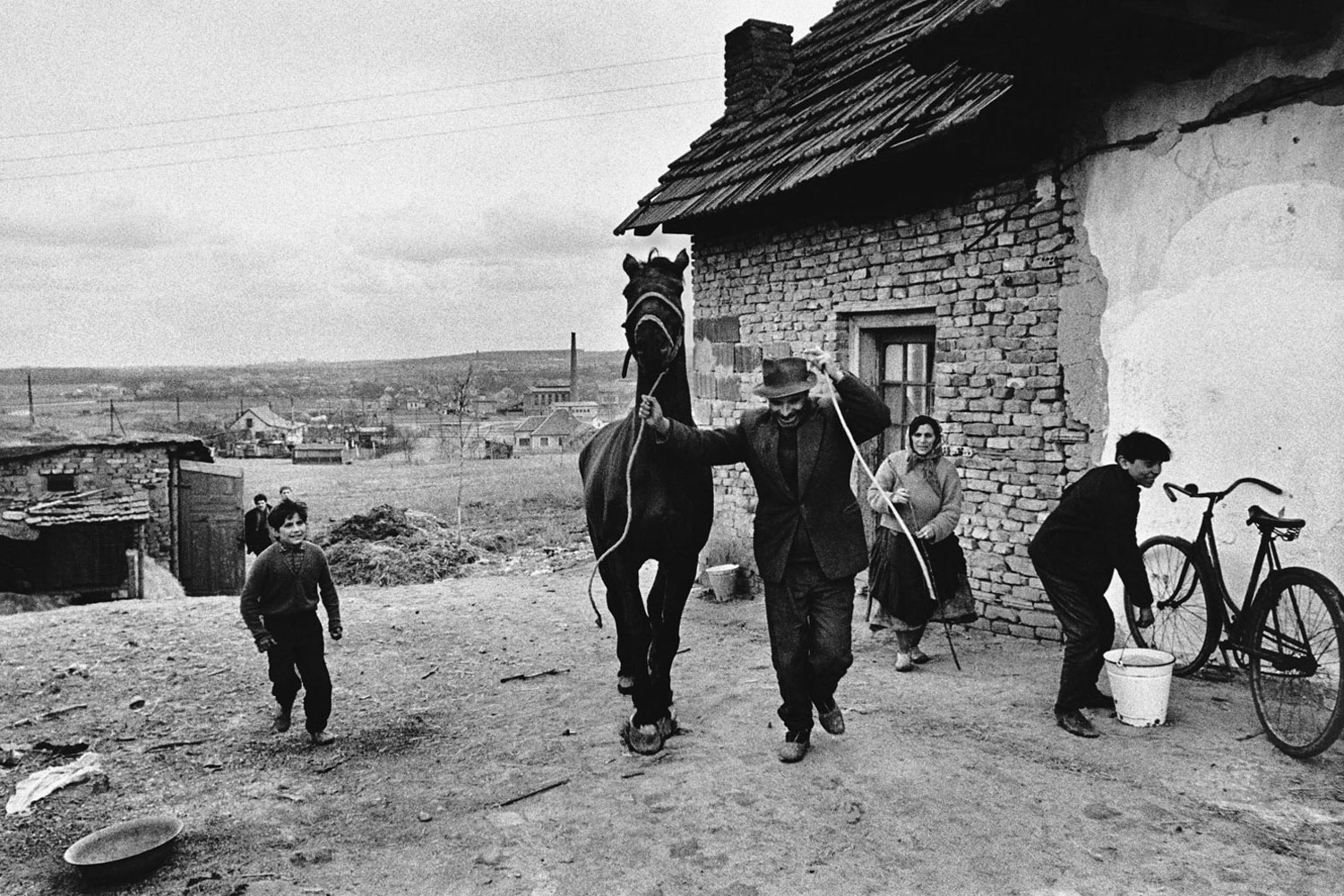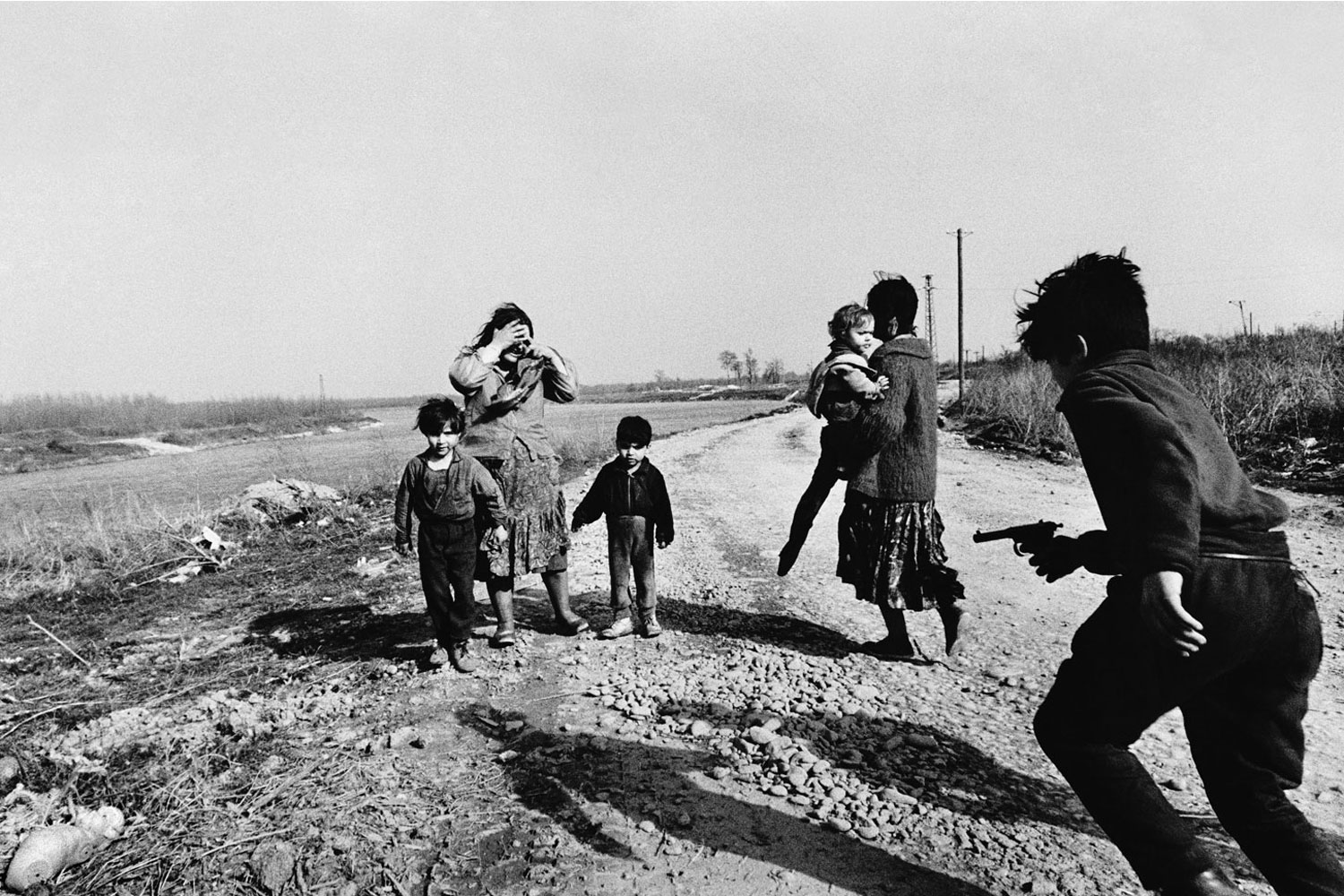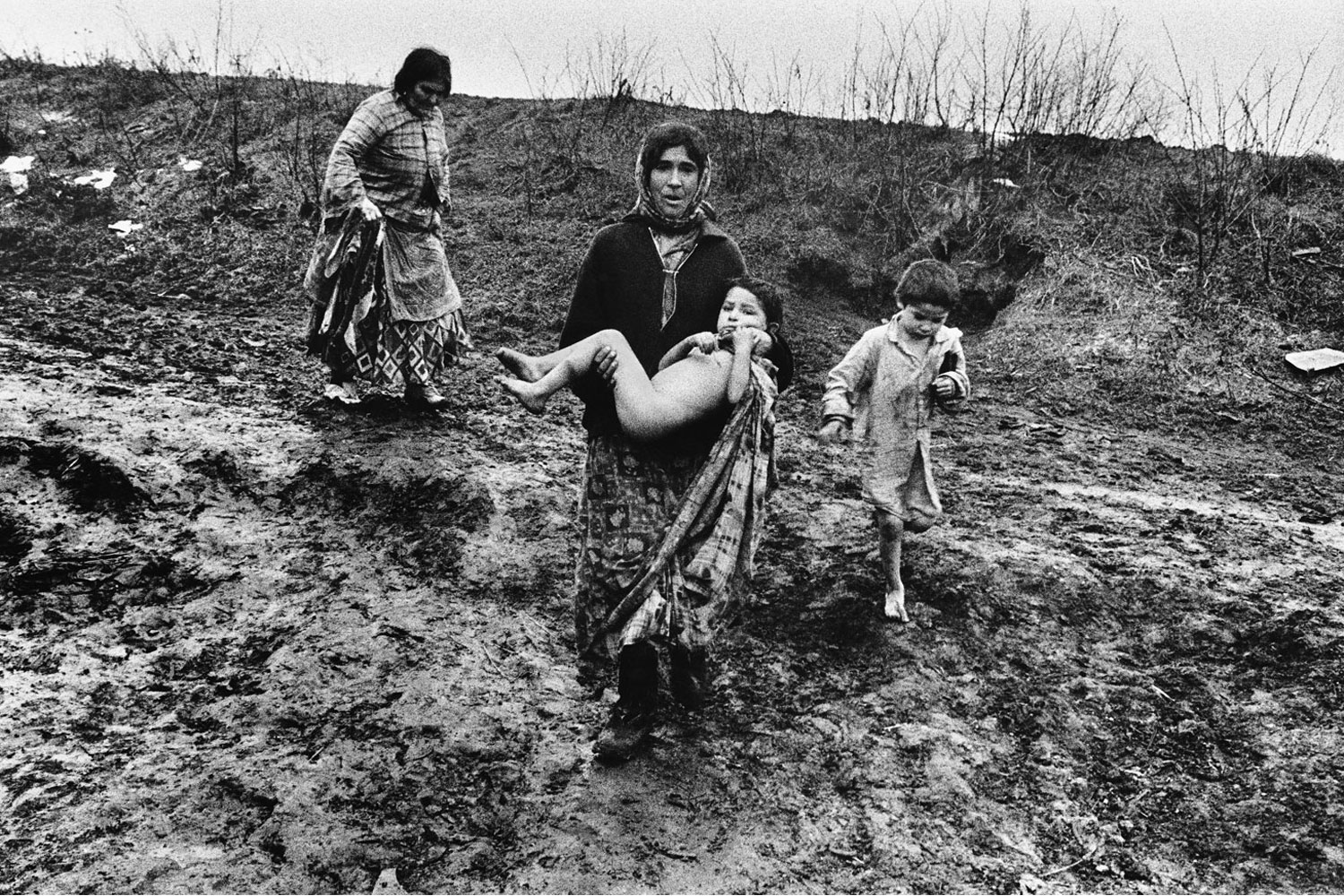
I know of few photographers knowledgeable of the work of Josef Koudelka who do not look upon his life as an artist with a certain level of romanticism. It holds true to a young photographer’s dream to have little by way of possessions beyond cameras, some film and the freedom to obsessively focus on the immediacy of the world through the lens. Koudelka’s life after leaving then-Czechoslovakia a couple years following the 1968 Soviet invasion seemed to be just that—an exile who traveled and photographed constantly during the warmer months and then spirited himself away into the darkrooms of the Magnum Photo Agency during the winters to process his labor.
It is fitting that his longest project before becoming stateless was that of photographing Europe’s Roma communities in Czechoslovakia, Romania, Hungary, France and Spain. Koudelka’s pictures of these roaming people would serve as the basis of his 1975 book, Gypsies, an updated version of which is being released this month by Aperture.
Since its original publication in 1975 by the French publisher Robert Delpire, Koudelka’s book Gypsies has become one of the seminal photo books of the last century. With Delpire acting as editor, Gitans—La Fin du Voyage (the original French title) boiled down hundreds of images shot over six years into a tightly edited sequence of sixty photographs. Starting with the opening image of three boys flexing their arms and drawing in their stomachs in a show of strength—perhaps as a threat to outsiders (belied by the look of uncertainty read on the face of one of the boys), Delpire’s edit moves us quickly into the visual energy of the community mixing frenetic action with direct portraits where the postures of the subjects signal their acceptance of Koudelka’s presence and camera. What is remarkable for me about the original edition’s edit is even though a page prior to the first image states that the photographs were “mostly taken in separated Gypsy settlements in East Slovakia,” there is the strong sense that the photographs describe a singular settlement, as if we had wandered into the encampment of a single extended family and been invited to stay.
My first introduction to Koudelka on the Roma was by way of a photograph that surprisingly did not make the edit of the original book but had made its way instead into Naomi Rosenblum’s A World History of Photography – required reading during my photo education at art school. The image—reproduced at a very small size—described a man, mid-action, kneeling in front of a white horse who, by the gesture of bowing its head, seems to be rapt in conversation. The picture took on qualities of magical realism even at its diminutive size. Compelled by that single image, I sought to see more of his photographs, but at the time, Gypsies was his only published work and had been declared long out of print, commanding prices more dear than what an art student could usually afford. I would have to wait a couple years before I stumbled upon a $15 copy sunning on a flea market table.
Robert Delpire’s role as editor can now be put into context in the new version of Koudelka’s masterwork, titled Koudelka: Gypsies. This revised and enlarged edition includes 109 images and uses the photographer’s original book maquette Cikani (Czech for Gypsies) as its foundation. It was prepared by Koudelka and the graphic designer Milan Kopriva in 1968 with the intention of publishing it in Prague, but Koudelka’s self-imposed exile intervened. With nearly twice the amount of images, Koudelka: Gypsies reveals dozens of remarkable images that have mostly remained unseen but interestingly, all were available to Delpire while crafting the original edition. The design of the 1975 edition, also attributed to Delpire, was very traditional in photo-book terms, with one image per spread, always appearing on the right hand page where as Koudelka’s maquette employs a completely different sequence with images appearing on facing pages, double-page spreads and several gatefolds that open like additional doors through which we can take in the intimate textures of his subjects within this secretive world.
Rarely has a body of photographic work been so deserving of two completely different treatments with each one successful in its own ways—leaving one to ponder which version they prefer: that of the editor or that of the artist.
The new extended version of Gypsies is published by Aperture. It consists of 109 photographs taken in what was, at the time, Czechoslovakia (Bohemia, Moravia, and Slovakia), Romania, Hungary, France, and Spain between 1962 and 1971.
Jeffrey Ladd is a photographer, writer, editor and founder of Errata Editions. Visit his blog here.












More Must-Reads from TIME
- Donald Trump Is TIME's 2024 Person of the Year
- TIME’s Top 10 Photos of 2024
- Why Gen Z Is Drinking Less
- The Best Movies About Cooking
- Why Is Anxiety Worse at Night?
- A Head-to-Toe Guide to Treating Dry Skin
- Why Street Cats Are Taking Over Urban Neighborhoods
- Column: Jimmy Carter’s Global Legacy Was Moral Clarity
Contact us at letters@time.com